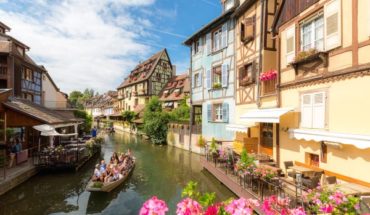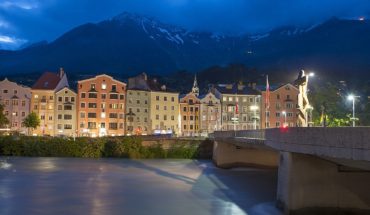A little more than 20 years ago, Berlin was a city divided. Literally split in two by the Berlin Wall, half of the city was guarded by trip wires, vicious dogs and rifle-wielding marksmen.
When the Wall came down, though, it signaled more than the reuniting of a city divided by politics and circumstance. The end of the Communist regime in Germany opened the doors to a new wave of creativity and freedom in Berlin, a city that hadn’t been considered “cool” since before the Cold War.
Today, Berlin has the distinction as one of Europe’s hippest cities, thanks to the influx of writers and artists drawn here by the possibilities of a city finding a new identity after decades of darkness. As Italian artist Davide Grazioli told Time magazine, Berlin allows for new beginnings, for taking chances that might be impossible in other European capitals.
Navigating Berlin’s Neighborhoods
Berlin’s creative rebirth is centered on two neighborhoods, once divided by the Berlin Wall. Mitte, at one point almost completely surrounded by the Berlin Wall, has been largely gentrified and is now home to upscale boutiques, galleries and cafes. Mitte is also where you’ll find important historical landmarks, including Checkpoint Charlie, the most notorious border crossing-point along the Wall, as well as Potsdamer Platz and Brandenburg Gate.
Kreuzberg, on the other hand, has been a bohemian and liberal neighborhood since its establishment in the 1920s. Always home to a large population of immigrants, largely from Turkey, Kreuzberg was known as the epicenter of punk rock music in Germany in the 1970s; musicians Iggy Pop and David Bowie often frequented the legendary club SO36, still operating today. The district remains the center of gay, lesbian, bisexual, transgender and queer life in Berlin; the Schwules Museum, for example, celebrates LGBTQ life in Berlin, with exhibits celebrating the art, culture and history of the LGBTQ population.
The New Berlin
While Kreuzberg might have the reputation of being the more liberal of the neighborhoods surrounding the former Wall, Mitte has its own bohemian enclave: the squats.
When the Wall fell in 1989, citizens suddenly had access to a large area of buildings in the former “no-man’s land,” or the streets closest to the Wall, as well as those that hadn’t been repurposed by the Communists. Berliners took advantage of the empty buildings, moving in and opening cafes, book and record stores, clubs and more. While some of the establishments — easily identifiable by the colorful artwork covering the exterior walls — are legal, many operate on the fringe, meaning the landscape changes from day to day. You might party at an all-night club with cheap drinks and cutting-edge DJs one night, and find the space replaced by a bookstore or art space a few months later.
The squatters are a fixture in Berlin, but the area is being gradually gentrified, as artists and entrepreneurs take advantage of affordable real estate to establish their shops, cafes and galleries. One notable example is the Hackesche Hofe, a restored collection of courtyards and buildings in Mitte. Worth a visit to see the incredible architecture, the complex also houses many designer boutiques and art galleries; try Trippen, for example, for environmentally friendly and stylish shoes. Or for items you won’t find anywhere else in Germany, such as avant-garde designer clothing, cosmetics and original art, explore the Departmentstore Quartier 206.
For a taste of Berlin’s new art scene, the squats often feature up-and-coming artists, but don’t overlook the Kreuzberg galleries of Max Hetzler and Barbara Weiss, or Martin-Gropius-Bau, a well-edited museum of contemporary art and design.
Where to Stay
Thanks to Berlin’s cheap real estate — the fact that flats rent for a quarter of the price of those in other cities accounts for a large portion of the artist influx — it’s also easy to find bed and breakfasts in Berlin for rock-bottom rates. For under €100 a night, you can rent a contemporary room near major attractions and arts districts, forgoing the high prices and more formal atmosphere of the luxury hotels near Potsdamer Platz and Alexanderplatz.
Wherever you decide to rest your head, you’ll find the new Berlin to be an exciting city of contrasts, a place in the process of redefining itself after decades of despair. There are still reminders of the Cold War and Communism in nearly every neighborhood, but the flood of creativity and energy promises exciting things for this once and future capital of cool.
Image from Flickr’s Creative Commons
About the Author: A young high schooler when the Wall fell, Kate Hafey visited the former site of the Berlin Wall while studying in Europe as a college student. She’s worked as a foreign correspondent in several European cities and now lives in Washington, D.C. with her family.


